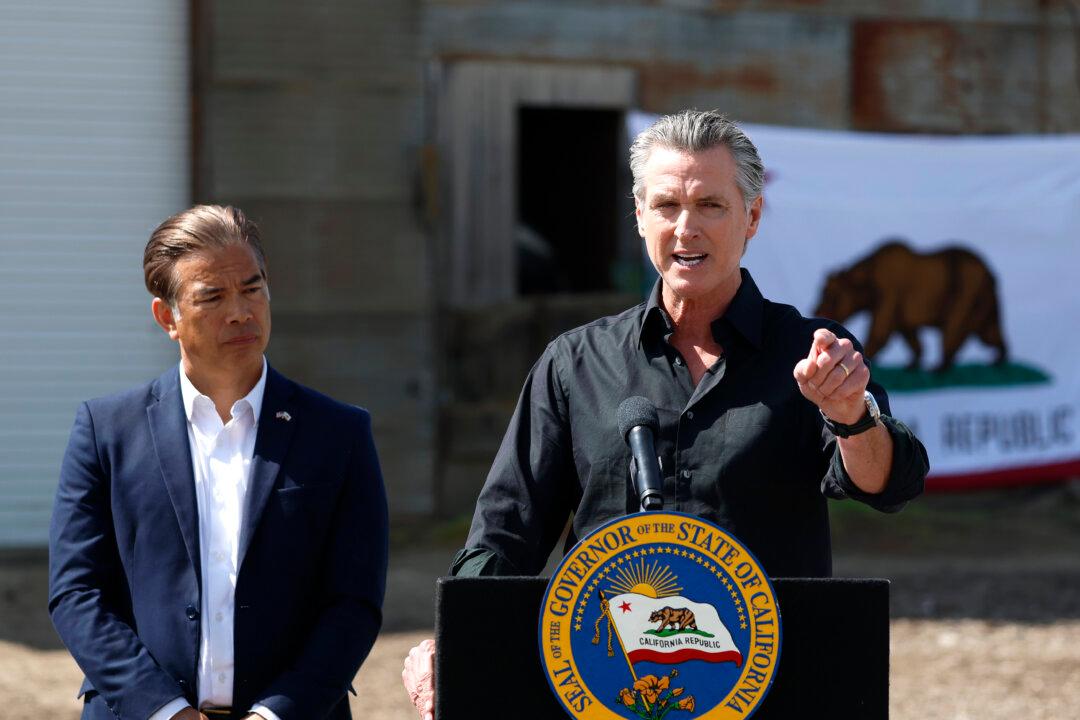California Gov. Gavin Newsom announced Sept. 7 that 20 National Guard members will be deployed to ports of entry along the U.S.-Mexico border to assist with fentanyl interdiction efforts.
“Fentanyl is a deadly poison ripping families and communities apart,” Mr. Newsom said in a press release announcing the move. “California is cracking down—and today we’re going further by deploying more CalGuard service members to combat this crisis and keep our communities safe.”
The new deployment increases the number of National Guard troops assigned to the border from 40 to 60 at four checkpoints, according to the press release.
The additional troops will support Customs and Border Protection efforts and narcotics search operations—including the use of vehicle X-ray machines to detect concealment of the drug.
Nearly 29,000 pounds of fentanyl were seized in California in 2022—a majority of which at the border—enough to kill more than 6 billion people based on Drug Enforcement Agency calculations, with an estimated street value of more than $230 million, according to the press release.
Authorities confiscated almost 12,000 pounds of fentanyl in 2023 by July 1, the release said, though law enforcement experts estimate less than 10 percent of all drugs smuggled across the border are intercepted.

Families around the state report tragic circumstances resulting from opioid addiction, with people of all ages succumbing to drug overdose. Approximately 6,000 Californians die annually from fentanyl, according to the most recent statistics from the Department of Public Health.
The drug’s lack of taste or odor make it difficult to detect and its toxicity—a few grains can be fatal—make it especially dangerous. Some dealers are additionally using the synthetic opioid to create counterfeit pharmaceutical pills and are lacing street drugs with it.
A larger National Guard presence at the border builds on the $1 billion pledged to address the drug overdose problem announced by the governor this year in addition to the release of his master plan (pdf) for tackling the fentanyl and opioid crisis in March.
“Over 150 people die every day in our nation from overdoses and poisonings related to synthetic opioids like fentanyl. Enough,” Mr. Newsom said in a press release at the time. “With this Master Plan, California is doubling down to combat this crisis and save lives.”

According to Mr. Newsom, the master plan includes cracking down on transnational organizations trafficking the drug and harm reduction strategies to reduce overdoses and to help those struggling with addiction.
While the majority of the $1 billion in funding is slotted for education and prevention efforts, the plan includes $30 million for National Guard efforts.
Another $15 million is dedicated to forming a Fentanyl Enforcement Program in the Department of Justice to facilitate investigation and prosecutions, according to the plan.
The governor also recently deployed the National Guard to assist with fentanyl interdiction operations in San Francisco, a joint operation with the California Highway Patrol.
Evidence of widespread fentanyl use is seen in many cities across California, with high-end shopping districts in San Francisco, Los Angeles, and San Diego all impacted with closed storefronts and tents of those that use the drug dotting landscapes once bustling with businesses and shoppers.







